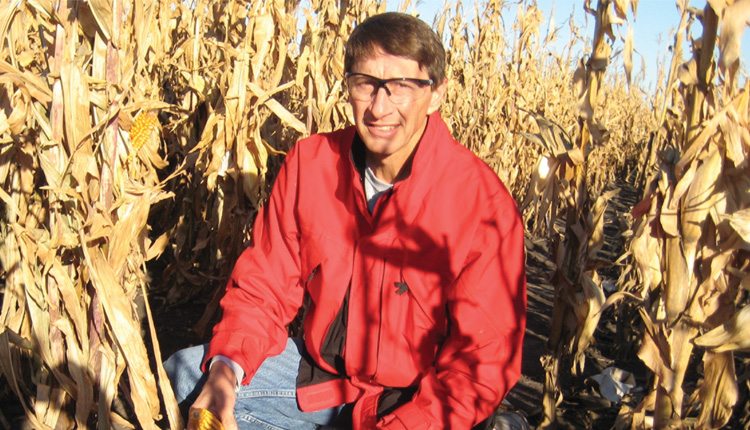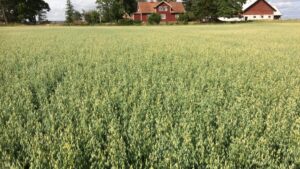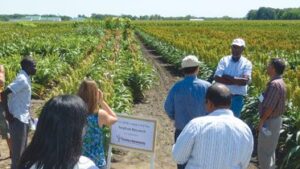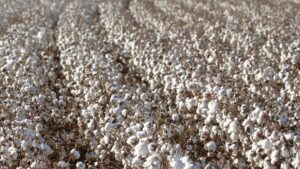A retired DeKalb corn breeder reflects on his 37-plus year career with the company, the role of plant breeding and the seed industry in general.
Special recognition each year at the Renville County All-Ag Celebration in Minnesota is the presentation of the Distinguished Service Award by the Renville County Corn and Soybean Growers. The honoree at this year’s March 21 event was Marv Boerboom, recently retired after 37.5 years with DeKalb brand, which included 20 years heading up Monsanto’s northern corn breeding and corn research program in Olivia.
Boerboom developed inbreds that have been parents of more than 156 different hybrids, which contributed to more than 62 million units of sales and growing and 155 million acres of corn across the Corn Belt. He has been granted 66 inbred patents with 34 patents still pending. These numbers literally are unbelievable with the seed industry.
His legacy goes far beyond his inbred patent numbers. Boerboom was recognized as a Monsanto Senior Fellow in 2002. In 2005, he received the Monsanto Science and Technology Career Award. In 2008, he was honored with the Edgar M. Queeny Award, Monsanto’s highest award for science and technology. Perhaps the honor that rings the bell for his genetic achievements was in 2012 when he was awarded the National Association of Plant Breeders first ever Commercial Impact Award.
Raised on a farm near Cottonwood, Minn., Boerboom’s higher education career started at Ridgewater College where he earned an associate’s degree in agronomy. Next was his bachelor’s from the University of Minnesota; then both his master’s and doctorate at North Dakota State University in Fargo.
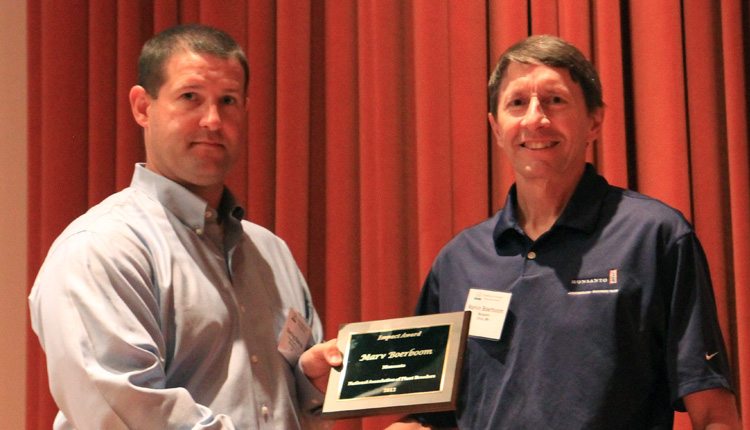
Early work experiences included an internship with Quaker Oats where he worked with various FFA chapters participating in the Oat Yield Contest sponsored by Quaker Oats. The mission was to instruct on oat production strategies to coax higher yields and better quality oats. He also visited several elevators plus farmers who were out collecting random samples of oats.
“Quaker Oats was trying to identify the counties with the highest protein contents because Quaker Oats was guaranteeing the protein content of their oat meal,” Boerboom explains.
But his real interest in corn genetics fired up as a University of Minnesota student when he worked in the crop genetics laboratory. At North Dakota State as a graduate student, he worked in the barley department.
His first “real world” job was in 1977 with Pfizer Genetics (formerly Trojan Seed Company, Olivia), which became DeKalb/Pfizer in 1982 and eventually became part of the Monsanto Corporation.
With so many successes in the corn genetics world, what ranks as his singular highlight? “I’d say it was the first million bag hybrid, DeKalb 250, which included one of my inbreds,” he says. “Sold only in Europe, this 85-90 day hybrid quickly captured the corn acreage of many European farmers. My first big impact hybrids in the U.S. Corn Belt were DK435 and KD547 which set the stage for the rapid expansion of corn production in the Northern Corn Belt, especially Minnesota, North Dakota and into Canada.”
What’s his take on significant future breakthroughs in corn production?
Boerboom reflected on the fact that the U.S. corn industry for the past 50 years has seen yield trend gains of about 1.5 bushels per acre per year.
“I don’t see the genetic impact of this tapering off,” he says. “But some GMO events will get tweaked more and more which will enhance yield even more … that could be traits that improve drought tolerance or traits that provide greater insect protection.
“But the big change has been in our breeding technologies. Crossing two inbreds, then selection among their segregates to develop new lines had been the ‘status quo’ within the industry for years but that took generations of time and hundreds of different inbreds. It was costly and very time consuming.
“Then we started doing genetic finger printing and modeling to predict which of what particular breeding material was going to do best. I would send in 3,000 kernels of an F2 segregated population and design a model of the traits I was looking for. We’d check chromosome-by-chromosome dissecting to determine which chromosome contained the best combination of desired traits in the model.
“For example, perhaps just a single chromosome might increase yield by maybe 2 bushels but stalks might be worse by 0.5 percent at the same site. You do this modeling, and then send the seed to the lab where each kernel is finger printed. Then perhaps I would get back 250 kernels that had the same genetic makeup which best fit my model of the 3,000 kernels I had sent to the lab.
“This process greatly increased the possibilities of isolating a specific inbred for potential hybridization and in a quicker time frame as well. That is why today hybrids tend to have a life span of fewer years versus the eight of 10-year life span previously.”
Might these new technologies lead to hybrids developed specifically for pharmaceutical values for humans?
Boerboom suggests these breeding ambitions are likely to continue. “There will be challenges because of the GMO mindset within the human population,” he says. “But I believe corn hybrids designed to produce medicine for particular human health issues might eventually happen.
“Crops developed to produce insulin, for example, might lessen the costs of these medicines and make them more accessible to people around the world. Maize continues to be the most amazing crop species developed by man!”
Today Boerboom lives in the Alexandria area where fishing lakes are plenty and hunting is good. But he hasn’t entirely hung up his cap. He’s mentoring a new breeder and is considering taking on some genetic improvement work in the Monsanto vegetable world … tomatoes, carrots, cucumbers, etc.
Summing up, he simply comments, “I’m missing my work and great colleagues at the Olivia research center, but I’m thoroughly enjoying my retirement,” he says. “Plus I’m doing some volunteer work, like currently 1.5 days per week at the local food shelf. Also I’m on the Ag Advisory Board for the new Alexandria High School. This is a great area, and life is good.”


